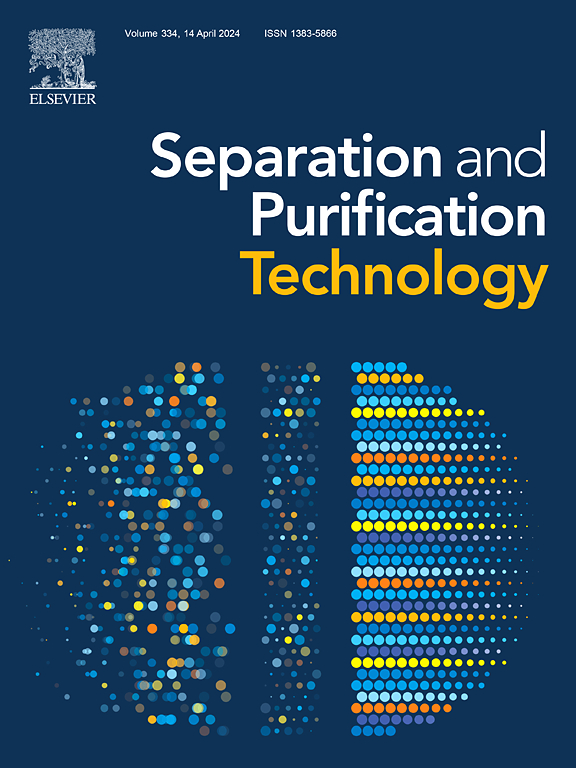A multifunctional strategy: Lithium recovery and chlorine fixation via co-pyrolysis of spent lithium-ion batteries and chlorinated waste plastics
IF 8.1
1区 工程技术
Q1 ENGINEERING, CHEMICAL
引用次数: 0
Abstract
Both lithium-ion batteries (LIBs) and chlorinated plastics are playing an extremely important role in our lives and leading to severe environmental issues when they reach end-of-life. In this work, a novel method to synchronously recover lithium from the spent LIBs and fix Cl from chlorinated waste plastics was proposed via co-pyrolysis and water leaching. The Li in the spent NCM LIBs was converted into soluble Li2CO3 and LiCl after the pyrolysis reduction, while Co, Ni, and Mn in the NCM were transformed into insoluble oxide or metal. Meanwhile, the Cl in the chlorinated plastics can be fixed and recovered in the form of LiCl, which avoids the emission of the pollutants containing Cl. Under optimal conditions, the recovery efficiency of Li was 88.55 %, and the fixing ration of Cl in the chlorinated plastics reached 91.27 %. The novel method is quite promising owing to the fact that it can also be extended to treat various chlorinated waste plastics.


多功能策略:通过废锂离子电池和氯化废塑料的共热解回收锂和固定氯
锂离子电池(lib)和氯化塑料在我们的生活中扮演着极其重要的角色,当它们达到使用寿命时,会导致严重的环境问题。本文提出了一种通过共热解和水浸同时从废lib中回收锂和从氯化废塑料中固定Cl的新方法。NCM废lib中的Li经过热解还原后转化为可溶性Li2CO3和LiCl,而NCM中的Co、Ni和Mn则转化为不溶性氧化物或金属。同时,氯化塑料中的Cl可以以LiCl的形式被固定和回收,避免了含Cl污染物的排放。在最优条件下,氯化塑料中Li的回收率为88.55 %,Cl的固定率为91.27 %。该方法还可以推广到处理各种氯化废塑料,具有广阔的应用前景。
本文章由计算机程序翻译,如有差异,请以英文原文为准。
求助全文
约1分钟内获得全文
求助全文
来源期刊

Separation and Purification Technology
工程技术-工程:化工
CiteScore
14.00
自引率
12.80%
发文量
2347
审稿时长
43 days
期刊介绍:
Separation and Purification Technology is a premier journal committed to sharing innovative methods for separation and purification in chemical and environmental engineering, encompassing both homogeneous solutions and heterogeneous mixtures. Our scope includes the separation and/or purification of liquids, vapors, and gases, as well as carbon capture and separation techniques. However, it's important to note that methods solely intended for analytical purposes are not within the scope of the journal. Additionally, disciplines such as soil science, polymer science, and metallurgy fall outside the purview of Separation and Purification Technology. Join us in advancing the field of separation and purification methods for sustainable solutions in chemical and environmental engineering.
 求助内容:
求助内容: 应助结果提醒方式:
应助结果提醒方式:


